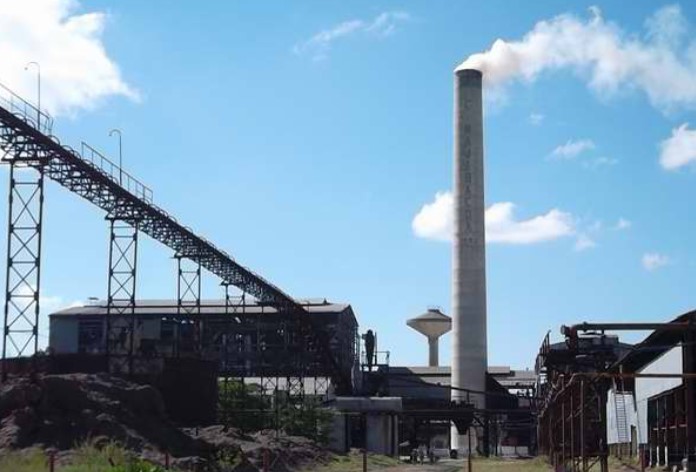Havana Cuba. — Regarding the fact that, according to agribusiness managers, “the first problem” in sugar production in the recently concluded harvest was the lack of “discipline” in the harvest, we said in the previous article that, in contrast to the cut, and mechanized shooting (transportation) of today, before the harvester was developed, men equipped with mochas and machetes cut the cane early in the morning and with oxen, tractors, carts and trucks took it to the ferries (crane-scales) making it arrive fresh to the plant by railway, “disciplined”.
Even without trucks or tractors, just after the War of Independence —which destroyed the sugar industry—, manually, with machetes and mochas and with carts pulled by several yoke of oxen, in 1900 Cuba produced 309,195 tons of sugar, a figure similar to that of the harvest that has just concluded (some 482,830 tons).
Although now it is not possible to export sugar and for Cubans it is strictly rationed, in 1900 291,460 tons were exported, something like 6,840 gallons of honey.
And, with that same technique of cutting and manually raising the cane, although for its transportation to the railway ferry they used, in addition to carts pulled by oxen, trucks and tractors pulling five or six carts, in 1952 the Cuban sugar producers produced, without much noise, 7,298,023 metric tons of sugar, grinding only 59,537,933 tons of cane. The other side of the coin is the call Zafra of the ten millionin which 8.5 million tons of sugar were produced, 1,201,977 tons more than in 1952, having to cut 79.6 million tons of cane, and using, in addition to manual cutting, mechanized cutting and lifting.
But in the harvest of ten million, which began to be prepared in the second half of the 1960s, Cuba still had main railway lines, linked with branches equipped with ferries in practically all the colonies that, after being expropriated, were grouped together. in the so-called “people’s farms”, “sugar cooperatives”, “administrative farms”, and later, “sugar districts”, euphemisms all used to mask the liquidation of private property of the sugar agribusiness, which passed into the hands of the State .
Batey is an indigenous word used to designate the space occupied by the sugar mills and their towns. And if for our aborigines the batey was the center of the spiritual and cultural life of the village, where they had fun with the areito and that kind of volleyball that we know as the game of batos, for our peasants, until the mid-seventies of the past century, the batey was no less.
The batey was much more than what was shown on state television in the program Palms and Reeds. Despite the undeniable exploitation, constitutionally prohibited, such as payment with vouchers, which our countrymen suffered due to the greed of an important part of the business community, the batey meant progress. They were in the batey, the well or the cistern with drinking water, the mixed store with groceries, clothing, footwear, tools, hardware store and although not in all of them, the public primary school, the barracks for temporary workers or West Indian immigrants, the garage for the tractors, the ferry and the Roman scale to weigh the bundles of cane.
But the railway branch that reached the ferries (cranes they were called), and were the nucleus of a batey, were not only used to make sugar, but also to go to the city in the primitive, but punctual railway transport of the time, making the country man and his family, jointly with people not exactly rural, make the land produce.
Although they live in the countryside, not all the residents of the batey can be considered an intrinsically rural population, worth saying peasants, because established in those settlements with the sole purpose of earning money by producing cane to make sugar, the majority of the residents of the batey were people of city, better or worse located, or immigrants, Europeans, North Americans and Caribbean. They were agricultural workers, crane operators, weighers, tractor drivers, truck drivers, carters, shopkeepers, cooks, mechanics, administrators, foremen, accountants, settlers, etc.
But most of the rural communities born with the sugar cane crane and the railway branch that gave them life, linking them with the sugar mill and providing it with fresh raw material, harvested on the day, disappeared with the batey and with it a civilization that has made disappear the sugar industry in Cuba.
Before sugarcane colonies, then districts and now Basic Units of Cooperative Production (UBPC), which were major suppliers of cane to the once central Delicias, later called Guiteras, Guabineyón, Santa Isabel, Ortiz and many others, were railway branches and population settlements rural, but today they are abandoned, uninhabited places, where workers must be transported every morning to cultivate the cane fields, but who already, at three in the afternoon, are on their way home with many vicissitudes.
Passing through those dead towns, one tries to remember the early mornings in them, but no matter how hard one tries, one cannot. And it is that the crowing of the roosters is not heard nor is the aroma of road coffee or the smell of freshly cut cane perceived. And it is not that “discipline” is lacking in the harvest, what is lacking is life in the cane fields and in the people who cultivate them. This way no sugar is produced. In the next article we will explore why.
OPINION ARTICLE
The opinions expressed in this article are the sole responsibility of the issuer and do not necessarily represent the opinion of CubaNet.
Receive information from CubaNet on your cell phone through WhatsApp. Send us a message with the word “CUBA” on the phone +1 (786) 316-2072, You can also subscribe to our electronic newsletter by giving click here.


















